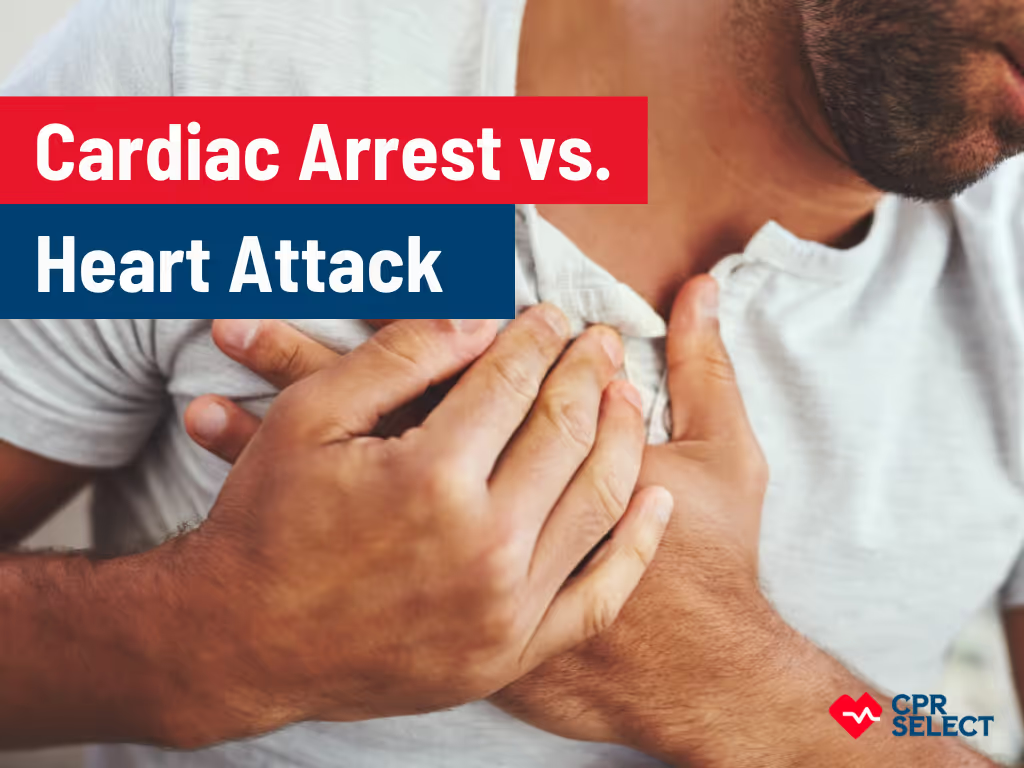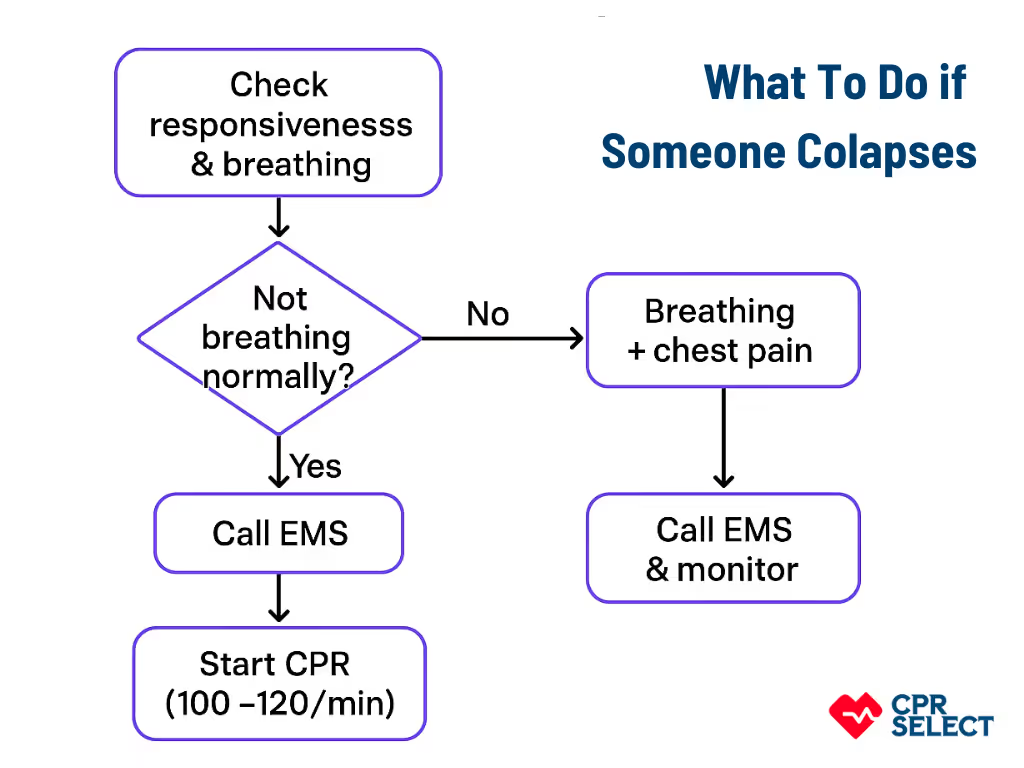Cardiac arrest occurs when the heart suddenly stops beating due to an electrical malfunction, causing an immediate loss of consciousness and breathing. A heart attack (myocardial infarction) happens when blood flow to part of the heart muscle is blocked, usually by a clot, but the heart often continues beating. Understanding the differences between cardiac arrest and a heart attack is crucial for saving lives. In this article, we'll explore why it's important to recognize these two medical conditions, and how acting quickly and appropriately makes a big difference.
Defining Cardiac Arrest and Heart Attack
Although "cardiac arrest" and "heart attack" are terms frequently used interchangeably, they refer to two distinct medical conditions with critical differences. This electrical vs circulatory failure breakdown helps responders choose the correct immediate action. Understanding these distinctions is vital for accurate communication and effective emergency response.
.avif)
What is Cardiac Arrest?
Cardiac arrest is characterized by the sudden cessation of the heart's normal rhythm, leading to an abrupt halt in blood circulation to vital organs. Unlike other cardiac events, such as heart attacks, in cardiac arrest, the heart comes to a complete stop. This interruption in cardiac activity results in critical oxygen deprivation to the body, demanding swift intervention to reinstate a regular heart rhythm.
Physiologically, electrical dysfunction results from a disruption in the heart's complex electrical system. This disturbance arise from a variety of causes, including severe arrhythmias or a malfunction in the heart's electrical signaling. The abrupt cessation of the heart's pumping action sets off a cascade of events, including the immediate deprivation of oxygen rich blood to vital organs. Urgent intervention is imperative to restore the heart's normal function.
What is Heart Attack?
A Myocardial infarction or heart attack occurs when a blockage forms in the coronary arteries, which are the vessels supplying blood to the heart muscle. This blockage is often due to the formation of a blood clot on a ruptured or narrowed artery. Unlike cardiac arrest, the heart continues beating during a heart attack, but the compromised blood flow result in damage or death of the affected heart tissue.
A heart attack is primarily characterized by the obstruction of blood flow to the heart muscle. This blockage typically occurs due to atherosclerosis, a condition where fatty deposits accumulate in the coronary arteries, leading to narrowed pathways and potentially forming dangerous blood clots. When a clot lodges in a narrowed artery, it obstructs blood flow, causing damage to the heart muscle.
A heart attack can trigger cardiac arrest due to dangerous heart rhythm disturbances, but most heart attacks do not immediately cause the heart to stop.
Causes and Risk Factors
While both heart attack and cardiac arrest conditions involve the cardiovascular system, their origins and contributing factors differ significantly.
What Causes Cardiac Arrest?
- Coronary Artery Disease (CAD): The most common cause of electrical dysfunction is coronary artery disease, where the blood vessels supplying the heart muscle become narrowed or blocked, reducing blood flow to the heart.
- Heart Attack: A heart attack triggers cardiac arrest. During a heart attack, blood flow to a part of the heart muscle is blocked, leading to damage and potential disruption of the heart's electrical system.
- Arrhythmias: Irregular heart rhythms, known as arrhythmias, cause electrical malfunction of the heart . These abnormal heart rhythms disrupt the coordinated pumping action of the heart.
- Cardiomyopathy: This condition involves the deterioration of the heart muscle, affecting its ability to pump blood effectively and increasing the risk of electrical malfunction of the heart.
- Electrolyte Imbalance: Disturbances in the balance of electrolytes, such as potassium and sodium, affect the heart's electrical activity, potentially leading to electrical dysfunction.

What Causes Heart Attacks?
- Atherosclerosis: Progressive buildup of fatty deposits, cholesterol, and substances on coronary artery walls.
- Blood Clot Formation: Clots develop on plaques, blocking narrowed arteries and leading to oxygen deprivation.
- Ruptured or Narrowed Arteries: Plaque rupture exposes inner contents, triggering clot formation or narrowing arteries, compromising blood flow.
- High Cholesterol: Elevated LDL cholesterol contributes to plaque formation.
- Hypertension: Increased blood pressure accelerates artery wear and tear.
- Smoking: Tobacco smoke damages blood vessels, hastening atherosclerosis.
- Diabetes: Elevated blood sugar levels increase the risk of plaque formation.
Unique Risk Factors for Each Condition
Both circulatory arrest and heart attacks have unique risk factors requiring specific focus. In the case of cardiac arrest, the risk is heightened by factors like a personal history of arrhythmias, past heart attacks, or a family history of sudden cardiac incidents. Substance abuse, particularly with stimulants, and certain genetic conditions heighten the risk.
In contrast, heart attack risk factors encompass a broader spectrum, including age, gender, and a family history of heart disease. Lifestyle factors like poor diet, sedentary habits, and obesity contribute, as do conditions such as hypertension and diabetes.




